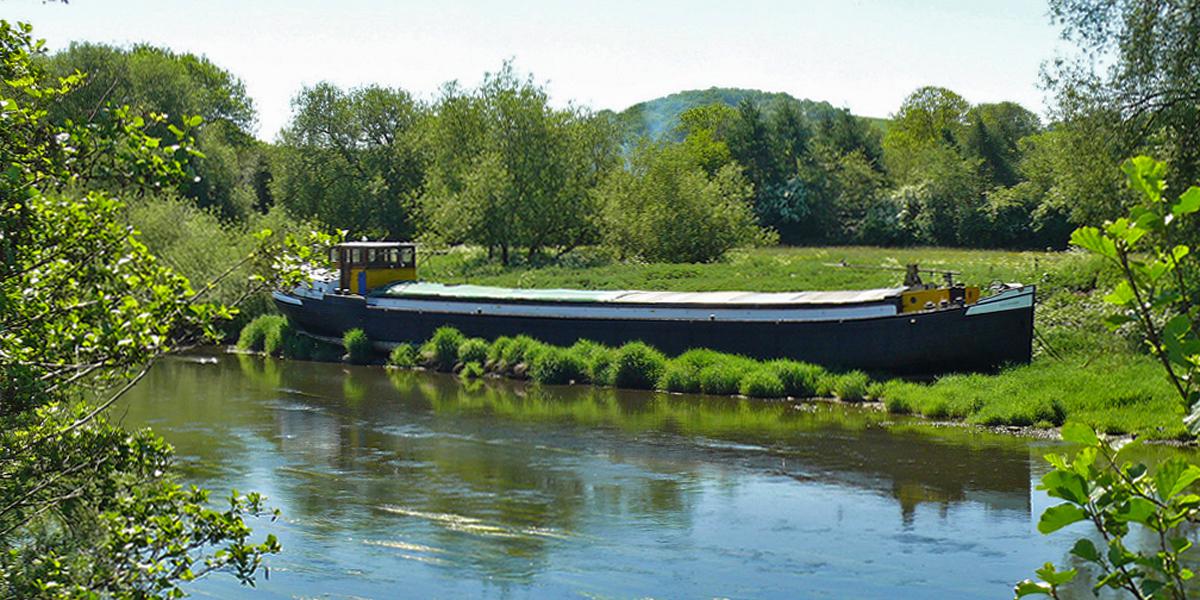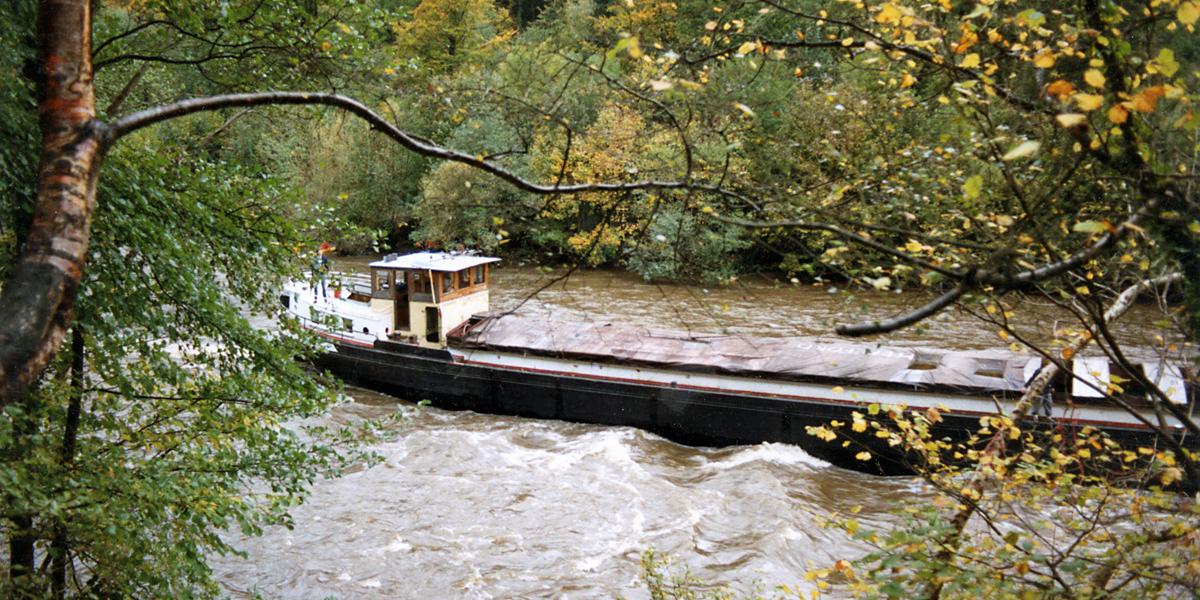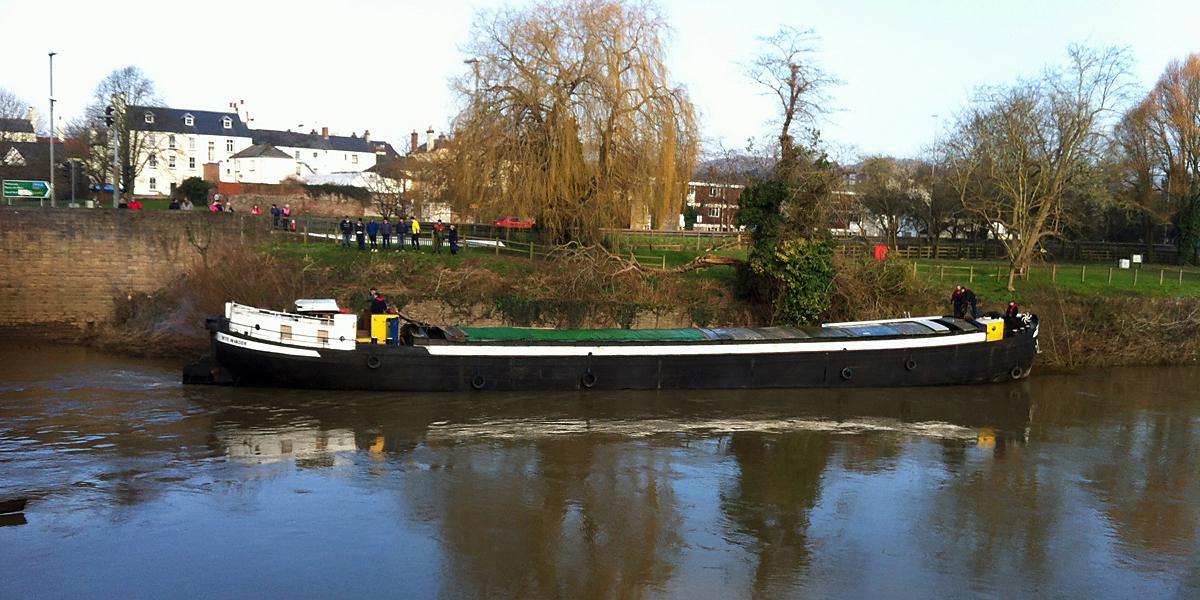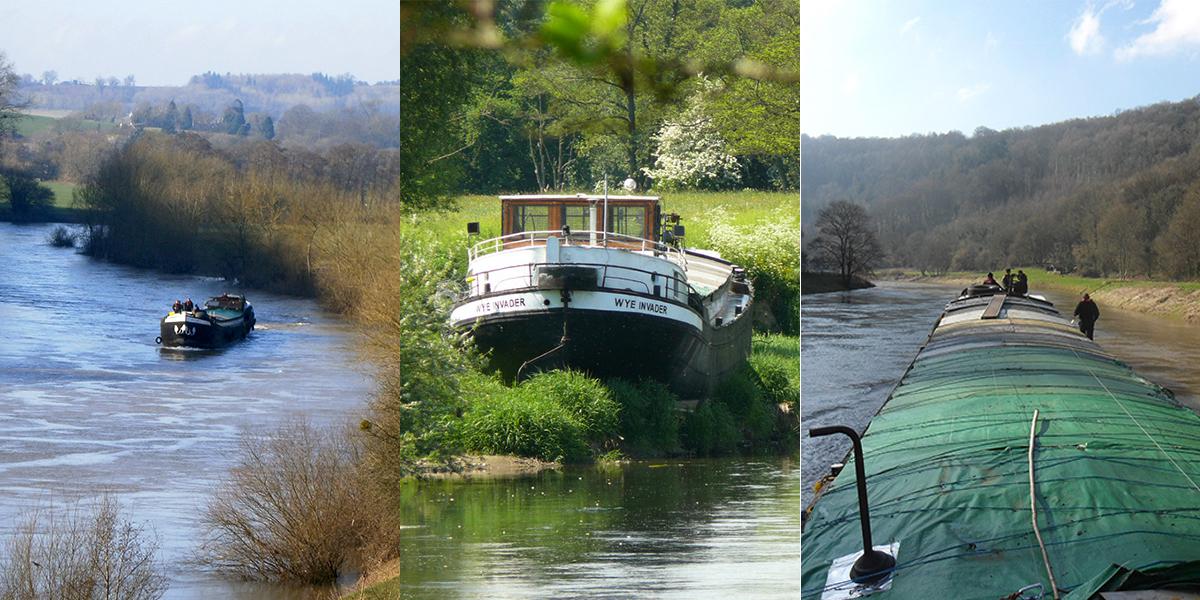Symonds Yat Lock
Very few people who visit the Wye Valley today would believe that Pound Locks existed and were constructed on the River Wye as early as 1662 by Sir William Sandys, just after the Civil War. The contract for the construction on the Wye was 2 years for the full navigation. The Pound lock at Symonds Yat, and all the other locks were built using stone that had previously been used to build Hereford Castle, and this stone was brought down river by boat. In all, 22 locks were built, the first at Eign the last at Bixweare, today named Bigsweir.
All the locks were removed from the River Wye with one exception in around 1727, when the River Wye was made a Free and Common River, the remaining lock was the Pound Lock at Symonds Yat. This was demolished by a group of fishermen and mentioned in the Hereford Journal on 12th July 1826.
I think the importance of the Survey, the painting and the press report from the Hereford Journal, show that the Wye Navigation was years ahead of its time and the fact that it was made a free navigation is, even today with access being restricted, more important than it ever was.
Flash Locks were a channel at, or through a weir where planks of wood were lowered into a groove, or slot one at time to create a dam, the boat sailed into the lock, the planks were then removed one at a time and the boat sailed out.
Pound Locks were used in Europe, the first one used on the River Wye was in 1662. A channel at, or through a weir, with a gate that opens at each end allowing the boat to pass through, when the water level as been lowered to required level using the gates.

The text top left reads:
AN EXACT MAP OF
NEW WEIR WORKS AND LANDS ALLOTED
THERETO FOR RESIDING
WORKMENS HOUSES
BEING PART OF THE ESTATE OF
THE ( HONABLE THOMAS GRIFFINS ESQUIRE)
WITHIN HIS MANOR OR LORDSHIP OF GOODRICH IN THE
COUNTY OF HEREFORD AND PART OF WEAR MILL
SURVEYED BY DAN WILLIAMS 1785

We are grateful to the Monmouth Museum for the use of a reproduction of the watercolour of New Weir by Thomas Tudor, which is used under © Copyright of MonLife Heritage/Monmouthshire County Council.



